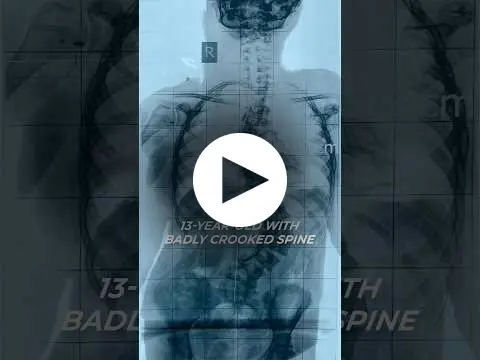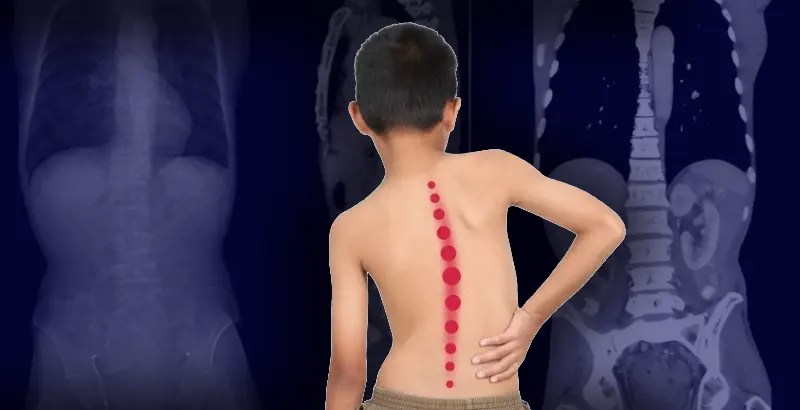Scoliosis is a condition characterized by an abnormal curvature of the spine, often diagnosed during adolescence. Early Recognizing Scoliosis In Your Teen and treatment are crucial for managing scoliosis effectively and preventing it from worsening. However, recognizing the subtle signs of scoliosis in your teen can be challenging.
What is Scoliosis?
Scoliosis is a sideways curvature of the spine that typically appears during the growth spurt just before puberty. While it can occur in children and adults, the most common type of scoliosis, known as idiopathic scoliosis, is often seen in teens. The exact cause of idiopathic scoliosis is unknown, but it tends to run in families.
What are the Early Signs of Scoliosis?
Recognizing scoliosis early can make a significant difference in treatment outcomes. Here are some subtle signs to watch for:
- Uneven Shoulders: One of the most common early signs of scoliosis is uneven shoulders. If one shoulder appears higher than the other or if one shoulder blade sticks out more, it may indicate scoliosis.
- Asymmetrical Waist: Check if your teen’s waist appears uneven or if there is an abnormal gap between the arm and the body on one side when standing straight.
- Prominent Ribs: If one side of the ribcage sticks out more than the other, especially when bending forward, it could be a sign of scoliosis.
- Uneven Hips: Notice if one hip appears higher than the other. This asymmetry can indicate a spinal curvature.
- Leaning to One Side: If your teen appears to lean to one side consistently, it may be due to an abnormal spinal curve.
- Clothes Fit Unevenly: Pay attention if your teen’s clothes don’t hang straight. For example, if a shirt or dress appears uneven at the hemline or if pant legs seem different lengths, it could be a sign.

13 Year Old Lumbar Scoliosis Surgery Recovery
How is Scoliosis Diagnosed?
- Scoliometer: A scoliometer is a tool used to measure the degree of spine curvature during a physical exam.
- X-Rays: To confirm the diagnosis and determine the severity of the curve, X-rays of the spine are taken. The Cobb angle, measured from the X-ray, helps assess the extent of the curvature.
What are the Treatment Options for Scoliosis?
The treatment for scoliosis depends on the severity of the curve and the age of the patient. Here are some common treatment options:
- Observation: For mild scoliosis (curves less than 20 degrees), regular monitoring is often recommended. The doctor will check the curve periodically to ensure it doesn’t worsen.
- Bracing: If the curve is moderate (20-40 degrees) and the teen is still growing, a brace may be prescribed. Bracing doesn’t cure scoliosis but can prevent the curve from worsening.
- Physical Therapy: Specific exercises and stretches can help strengthen the muscles around the spine, improve posture, and reduce pain.
- Surgery: For severe scoliosis (curves greater than 40-50 degrees), surgery may be necessary. The most common procedure is spinal fusion, which stabilizes the spine and prevents further curvature.
How Can Parents Support Their Teens?
Supporting your teen emotionally and physically is crucial during scoliosis treatment. Here are some tips:
- Encourage Open Communication: Talk to your teen about their condition and encourage them to express their feelings and concerns.
- Promote Physical Activity: Encourage your teen to stay active with safe exercises that don’t strain the back.
- Ensure Proper Brace Use: If a brace is prescribed, ensure your teen wears it as directed. It can be challenging, but consistent use is essential for effectiveness.
- Regular Check-ups: Keep up with regular doctor appointments to monitor the progression of the curve.
Recognizing the subtle signs of scoliosis in your teen can lead to early diagnosis and better treatment outcomes. Uneven shoulders, asymmetrical waist, prominent ribs, uneven hips, leaning to one side, and clothes fitting unevenly are all potential indicators of scoliosis.
At Synapse Spine, Best spine clinic in Mumbai, we are dedicated to providing comprehensive care for scoliosis. We offer a range of treatments tailored to each patient’s needs, ensuring the best possible outcomes. Early detection is key, so don’t hesitate to consult professional advice if you suspect scoliosis in your teen.
SCOLIOSIS TREATMENT IN MUMBAI

Boy with Scoliosis treated at synapse spine mumbai by Dr. Nandan Marathe
